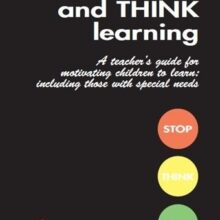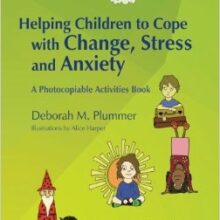Description
-
How To Increase the Potential of Students with DCD (Dyspraxia) in Secondary School
This book will provide readers with an insight into how DCD can affect students at Key Stages 3 and 4, and provide some practical strategies to help each young person to reach their potential.
It is also intended to help parents/carers of young people with DCD to understand the potential help available to their child as they transition into secondary education.
For pupils with DCD, poor handwriting, erratic organisation, and difficulties with reading, mathematics and physical education may have been noted at primary school with their associated detrimental effect on academic success, peer relationships, social skills and self-confidence. However, these issues are felt more keenly in secondary school due to the desire to ‘fit-in’ and be accepted by a potentially large and often unforgiving peer group.
This book is intended to inspire teachers and health care professionals to: understand the unique needs of young people with DCD; understand why young people with DCD have difficulties in perceptual and motor planning; appreciate the impact of DCD on learning; consider the added influence of peer-pressure and puberty on DCD; provide practical strategies to help; consider post-16 and vocational training. It is also intended to help parents/carers of young people with DCD to understand the potential help available to their child as they transition into secondary education.
-
How to Identify and Support Children with Speech and Language Difficulties
Every primary classroom is likely to have at least one child with some degree of speech and language difficulty. Here, Jane Speake offers a straightforward guide to identifying the children affected and a wealth of practical advice on support.
Incorporating the Afasic Checklists- easy-to-use tests for use by the non-specialist teacher- this book will:
- give you an overview of the various types of speech and language difficulties
- help you to spot the child with difficulties and show you what to look out for
- offer clear guidance on when to refer to speech and language therapy for assessment
- clarify the various roles played by education and health service professionals and parents- and how to work together for effective support
- give you practical ideas for supporting the child in the classroom and strategies for tackling specific areas of difficulty
-
How to Manage and Teach Children with Challenging Behaviour
This book has been written to strengthen and inspire any teacher fatigued by deteriorating behaviour in their class.
It provides:
- clear, practical advice for senior managers, teachers and teaching assistants;
- definitions of troubled and troublesome behaviour; a helpful model of behaviour management;
- and strategies for avoiding confrontation and dealing with it when it does arise.
Taking the approach that prevention is better than cure, advice is given on how to create a positive ethos, in which challenging behaviour is less likely to occur in the first place.
“How to Manage and Teach Children with Challenging Behaviour” is sure to become an indispensable friend and guide to any teacher experiencing the daily challenges of a modern classroom.
-
How to Teach and Manage Children with ADHD
Along with many years’ experience of working with and managing children with ADD, the author also brings together the latest thinking on ADHD and provides a wealth of winning school-time strategies.
It includes rare but invaluable advice on the different ways that ADHD may affect girls and reflects upon tactics to stop bullying in schools.
Other chapters provide tips on developing alternative learning strategies, classroom organisation and playtime supervision. There is also a section on how to successfully manage your school trips and why they are such a good idea.
-
How to Identify and Support Children with Dyslexia
Sections include:
- Definitions of dyslexia, recent research and early identification issues.
- What is it like to be dyslexic?
- A child’s perspective on dyslexia.
- Differences in learning styles
- How to support the dyslexic learner in the Literacy Hour
- Using teaching assistants most effectively
- Useful resources – letters for parents explaining dyslexia including suggestions of ways in which parents can support children at home
-
How to Understand and Support Children with Dyspraxia
An invaluable resource for teachers, teaching assistants and therapists.
With over twenty years experience, Lois Addy emphasises the importance of understanding dyspraxia in order to provide effective support for children with co-ordination and perceptual difficulties.
The book includes:
- what to look out for to recognise children with dyspraxia
- useful checklists for identification
- details on the needs and difficulties faced by children with dyspraxia
- ideas for support across the curriculum, in particular the areas of
- handwriting
- numeracy
- PE
- reading
- social skills
- communication frequently asked questions about dyspraxia – and the answers!
Lois Addy is a paediatric occupational therapist and has over twenty years experience of working with children with dyspraxia. She currently works at York St John College, University of Leeds as a senior lecturer in professional health studies.
Suitability: 5 – 11+





